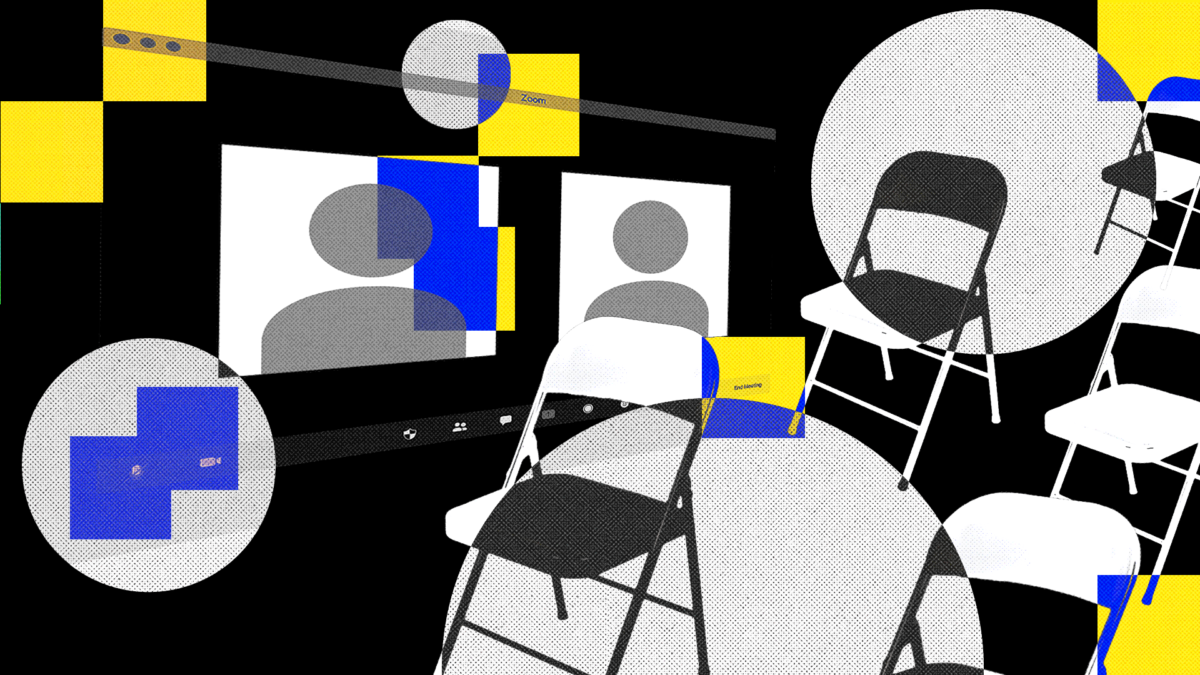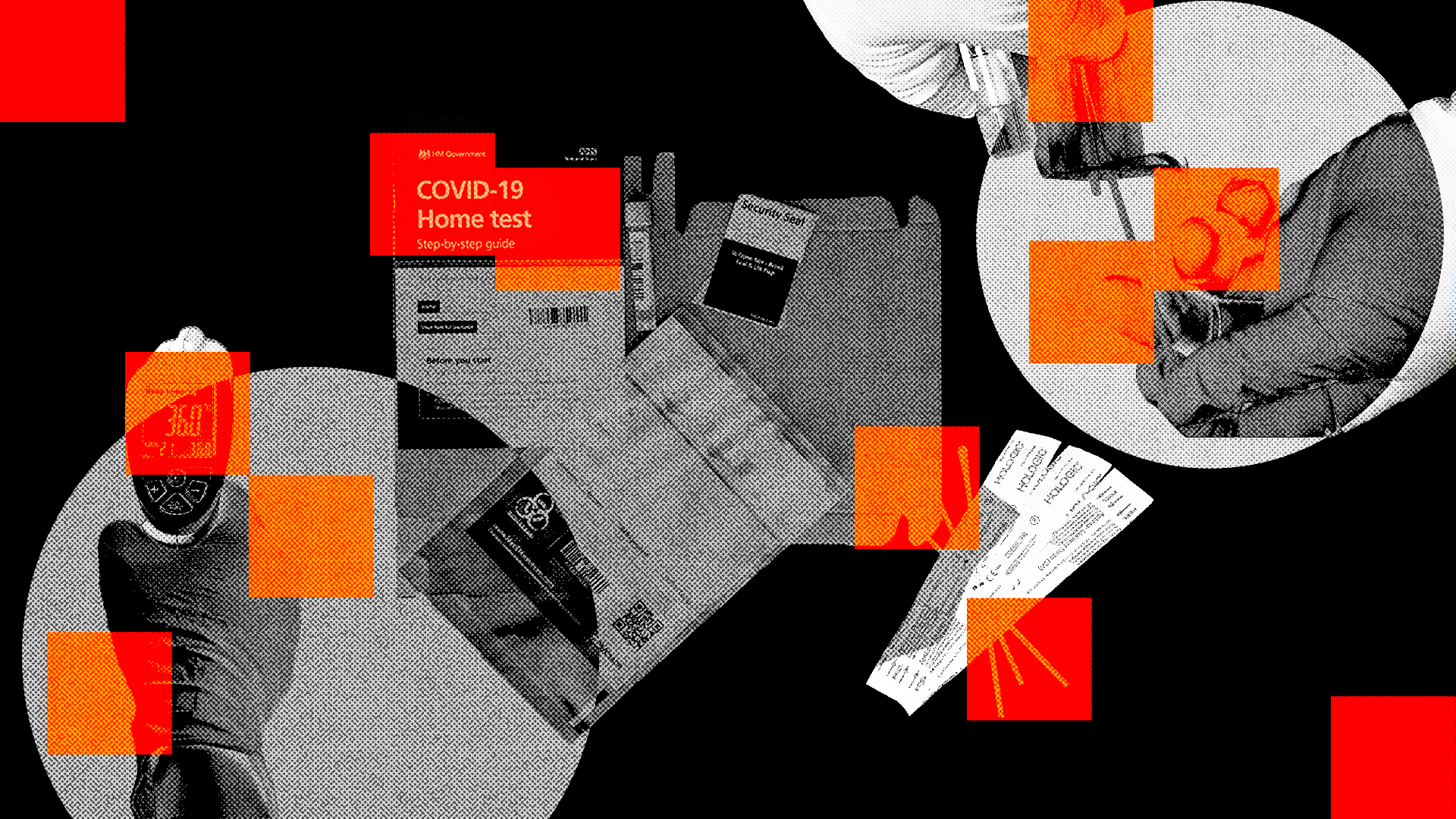This August, as more than ten thousand members of the New School community — staff, students and faculty — returned to the main campus in New York City for the first time since 2020, they had to adapt to and accept new protocols and policies in place due to COVID-19. The university’s handling of pandemic protocols and safety measures, however, has left many students, staff and faculty frustrated by a lack of transparency, coherent messaging and repeated delays in the testing process. In interviews with The New School Free Press, students from all five divisions of the University spoke of confusion about testing, disappointment with the contact-tracing system and dissatisfaction with the continued lack of hybrid learning options.
Students, above all, are concerned for both their physical well-being and academic success, and many also expressed mental distress as a result of what they see as the university’s mismanagement of its own protocols.
University Testing Policy and Campus Access
Students who spoke to the Free Press said they appreciate the school’s partnership with binx — a Boston-based COVID-19 self-administered testing kit company, formerly a specialist in testing for sexually-transmitted diseases. Successive testing delays, however, have caused students to miss classes. Further, despite university assurances, some students also question the accuracy of the binx tests.
Fully vaccinated students are required to get tested — on or off campus — every 14 days to maintain campus access. Some students reported a good experience with the on-campus binx testing system, saying that it has made getting a COVID-19 test easy and efficient.
The average turnaround time for the results of a binx PCR test is around 24-48 hours.Yet, in practice, the university’s protocols have been plagued by backups on multiple occasions, due to a lack of employees, weather disturbances and most notably, the need to send the tests to Georgia. These processing delays have caused students to lose campus access and miss classes. More than a dozen students told the Free Press that they, themselves or friends have been locked out of campus buildings due to delayed test results.
Emily Quinn, a first year at Parsons School of Design, said the university’s campus access protocols have negatively affected her academic experience and performance throughout the semester.
“I have not been able to use promised studio spaces (in residence halls) because there is never availability,” Quinn said.
As finals are approaching, she is unsure whether she will be able to complete classwork due to the capacity limitations.
Some students have also expressed concerns with the university’s testing site and students self-administering tests. Several students, who wished to remain anonymous for fear of administrative reprisals, stated that they are worried that self-administered tests like binx’s are less accurate than those administered by medical professionals.
“My biggest concern is the fact that [The New School is] prioritizing people using self-swabbed tests like binx, because they may be less accurate than other tests,” a third- year student at Mannes School of Music said.
Second year Lang student Ryan Minter said in general they are pleased with the testing policy, but problems remain.
“As someone who is immunocompromised, I’d rather be safe than sorry,” Minter said.
While Minter appreciates the two-week testing frequency, they question the accuracy and reliability of Binx test.
“I got a false positive last year during spring semester and [the university] would not accept my two negative PCR tests,” Minter said.
Minter worries if this reoccurs students will have to unnecessarily miss classes.
However, another student said they are more concerned about tests students take off campus. They are worried that students may be submitting false or altered test results.

Hybrid Learning
Students’ experiences with hybrid classes, which mix in-person instruction with virtual instruction, vary largely from school to school and from professor to professor. However, students said they want more — and better — hybrid options than are currently offered. The New School, meanwhile, has followed an official policy of advising faculty against offering Zoom options for students who are isolating or in quarantine.
Students at Eugene Lang College of Liberal Arts criticized the lack of technology in classrooms to facilitate live streaming in-person lessons over Zoom. Although the university did install webcams in all classrooms, audio within the classroom is not always clear over Zoom.
Mannes students, meanwhile, said that their division has more lenient rules regarding in-person attendance policies, and that they have enjoyed more virtual options for classes. Parsons students said that little to none of their classes offered Zoom options, and that their professors take their attendance very seriously, which can often hurt their grades.
Many students are frustrated to be locked-out of classes when they face delayed testing results, and others said they would like the opportunity to participate digitally when they are locked out. Despite the high cost of the New School’s tuition, they noted that too many classrooms and professors are not provided with adequate audio-visual technology.
“It’s out of your control [when] you miss class because your binx test is taking longer than expected because they have gotten backed up,” said a second-year Parsons student who asked to remain anonymous.
Students would like to see the university allocate money to better equip classrooms with cameras and recording devices so that professors can efficiently facialite hybrid classes in the spring semester.
“I think the school, with all the money it has, should have put video equipment in each classroom and teach professors how to engage with in-person and Zoom students so everyone can have an equal opportunity to learn in the classes they pay for,” the same Parsons student said.
The official university messaging has evolved during the fall term, and often left students more confused than clear about the current policies. New School students have received varied responses from professors around hybrid class options, according to Free Press interviews.
“Professors are not prepared for students who have to stay home to quarantine or wait for test results,” one student said.
Additionally, a Lang student said that many professors can not effectively manage teaching in-person classes while operating Zoom at the same time. Another unintended consequence of the ambiguous hybrid directives from the university is that many professors have removed Zoom options altogether. Students from Parsons, Lang and Mannes shared that their professors have ended Zoom classes because some students would rather join the class virtually than attend in person despite having campus access, resulting in reduced class attendance.
“I have a professor who opens Zoom on her laptop and carries it around the classroom,” one student told the Free Press. “I have another professor who uses a stand with a camera so that online students can see those in the classroom. He shares the presentation on Zoom so that everyone can view it. I have another professor who makes us all log onto Zoom — regardless if you are in person — when there is a guest lecture or even with her own presentation so that we can all see the presentation up close and the speaker can see us.”
When a professor tests positive, their classes are forced to go online for 10 days under New School policy. Similarly, if a student tests positive, they must isolate for 10 days and inform their professors that they are in active quarantine. However, professors are not required to broadcast in-person classes over Zoom for students who are isolating. In fact, many report having been told explicitly not to hold Zoom for any student unable to attend class in person. The New School, instead, has put the burden on COVID-positive students to be communicative with their faculty and peers, and to stay up to date on classwork and assignments.
The lack of official guidance for hybrid classes has led to inconsistencies in how professors address students who test positive.
“Professors enforce and view the protocols differently,” Zach Wassef, a first year student at Parsons said. “One of mine refuses to hold Zoom classes even when students are sick. Their reasoning was that students would not learn the same.”
Wassef said that another of his professors holds Zoom classes, “but does not interact with anyone on Zoom or count online attendance,” he said.
Wassef added that he believes students “should still be able to listen in” when they cannot attend physical class.
Anne Fejer, a second year at Parsons, said she wants the university to standardize hybrid courses.
“The campus access badge does not have an expiry date so sometimes I’ll forget to test and can’t go to class,” Fejer said.
Fejer has a mix of hybrid and in-person courses, but Zoom classes have largely been a disappointment.
“I can never hear anything besides mumbles,” Fejer said. “Professors will walk away from the mic or students speaking are not close to it, so I’m always lost.”
She attributes this shortcoming to professors only recently experiencing teaching hybrid classes. Fejer hopes the university will equip classrooms and professors with technology to efficiently facilitate in-person and virtual classes simultaneously.

Contract Tracing
Since the summer, the university has rushed to hire a small team of contract tracers tasked with identifying community members who have tested positive for COVID-19 and to notify their contacts.
University PR representative, Merrie Snead, said the purpose of contact tracers is to alert contacts in a timely manner.
However, students told the Free Press that they typically hear of exposure through conversation with classmates or professors, not the university’s contact tracing department. A student told the Free Press they knew of a classmate who tested positive and received an exposure notice from the university five days after.
When exposed to someone who has tested positive, vaccinated, asymptomatic individuals are not required to quarantine but unvaccinated individuals with approved medical or religious vaccine exemptions are required to quarantine, according to university policy.
One Lang student, who received an email from the contact tracing department alerting them that they were exposed to a COVID-positive student in November, said they are concerned with the university’s stance that vaccinated individuals do not need to quarantine.
“The only thing that I was skeptical about is that since I’m vaccinated they said I didn’t have to quarantine,” the student said. “Overall I think [Student Health Services is] very proactive, but a little more information would be helpful and reassuring.”
Dani Hoppenheim, a third-year student at Lang, said she received an email from contact tracers in September. Hoppenheim said the email was lackluster and she expressed a desire that all correspondence to students would offer more concrete support.
“They send you an email that you are exposed and you are expected to just go and fend for yourself,” Hoppenheim said. “I would like more information, support, and direction [from contact tracers].”
University Communications
The New School shares the majority of its COVID-19 safety updates and news with students via email. However, students don’t always read these emails and are often left in the dark on policy changes.
Meghan Boles, a third year student at Parsons, offered a simple solution: the university could differentiate COVID-19 policy information from other emailed announcements.“When I’m looking at my mailbox each of the emails look the same,” Boles said. “I never know if it’s about New School, Parsons, or COVID updates because we get many emails everyday.”
Boles believes the university should use a different platform, or app, to send these urgent updates, so they are actually read — and not lost in overflowing inboxes.
To date, emails are sent by multiple school departments such as New School Student Success, Student Health Services and the Provost Office, and often include important information like updates on safety protocols, COVID-19 isolation policy reminders, university travel safety guidelines and entry testing explanations.
Despite the complaints about the university’s handling of COVID protocols, many students still said that they were happy to be back on campus this semester thanks to the university’s safety measures.
Julius Mauldin, a second year at the College of Performing Arts, said he has had all of his classes in person this semester.“I appreciate the protocols and have not had a negative experience,” Mauldin said, “All my classes have been going fairly smoothly. The on-campus testing site is convenient and as a student I don’t feel inhibited by it in any way.”







